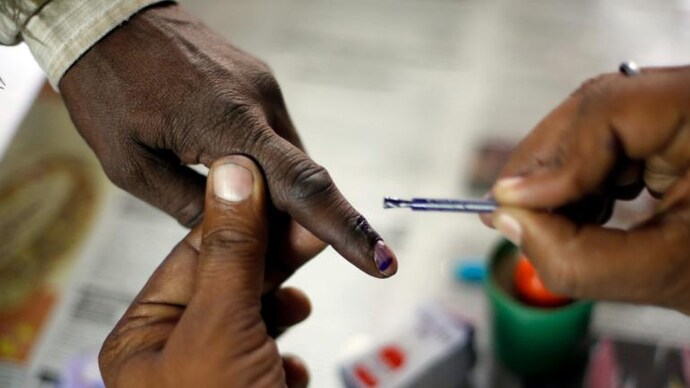Here's how India Today TV undertook its largest post poll study
Over 7 lakh respondents were surveyed across 542 constituencies and it's been no cakewalk.

In Short
- Sticking to difficulty levels, Karnataka & Madhya Pradesh top list in terms of geographical constraints
- Gujarat emerged as the easiest city to survey
- However, a surveyor said talking to women in Gujarat was hard
Bengal is a pollster's nightmare and Gujarat, a dream. Yes, that's what lead pollster at Axis My India, Pradeep Gupta, told us when we spoke to him about the mammoth exercise the leading survey agency has conducted to learn who India has voted for in the 2019 general elections.
On May 19, right after the last phase of polling concludes, India Today TV is all set to reveal the numbers from Axis My India's post poll study. Over 7 lakh respondents have been surveyed across 542 constituencies and it's been no cakewalk.
Pradeep Gupta tells us that surveying respondents across India's diverse states can be quite a challenge, and the difficulty levels can be analysed on several parameters.
The fear factor
Bengal, he says, was very difficult to survey this time and the intensity of the challenge was more than in 2014. The reason, he says, is law and order issues. "When we try and talk to people, they over-react and approach us very suspiciously. Their mindset is such that we've been sent by the BJP or Congress, as Trinamool is the ruling party," Gupta says.
In Bengal, Gupta says, he met the 'silent voter'. Not the kind the media talks about though. In fact, he says, "silent voter" is a media terminology when the latter are unable to reach out to the voter!
"In Bengal, it is the fear factor, which we have factored into our final analysis. People are not revealing their political choice. People loyal to a particular party tend to go silent because they fear the 'other' will beat them up," revealed Gupta.
Interestingly, Gupta said, he usually finds BJP voters very enthusiastic to reveal their political choice about the rest of the country save Bengal. "In Bengal, it is the reverse! Those voting for Trinamool are vocal about it. But those who prefer non-TMC parties, prefer to stay silent," he pointed out.
Of course, what's noteworthy is that Axis My India factors out the voters who seek for surveyors so that they can mention who their political choice is.
Geographical constraints
Sticking with difficulty levels, Karnataka and Madhya Pradesh top the list in terms of geographical constraints. "Madhya Pradesh and Karnataka are big states, so it takes time transiting from one place to another," explains Gupta.
Hilly states like those in the North-East, Himachal Pradesh, Uttarakhand and Jammu & Kashmir are also tough in terms of commuting. "In normal course, it will take 25-30 minutes to cover 20 kms, but it could take 2 hours in these states," he said.
When it comes to the availability of local human resources, Kerala and Odisha are a pollster's nightmare. "It's important to have people who know not just the local language, but also the local dialect to connect easily with respondents. Only then will the latter be familiar with us and be ready to reveal facts," said Gupta. It's impossible to work in Kerala and Odisha, he said, if one can't get this right.
When weather plays spoilsport
And when it comes to a long-drawn election during peak summers, how can one discount extreme weather conditions? Uttar Pradesh, says Gupta, is the worst in this case.
When asked which was the easiest state to survey, 'Gujarat' came out as a prompt reply. "It's easy to connect, no geographical or administrative difficulties. People are more helpful. They are not rigid and you don't get rejections," said Gupta.
Though there's a catch. "Talking to women is difficult in Gujarat," he said.
Conversion ratio
So what does conversion ratio mean? Conversion ratio means the number of positive responses a surveyor gets for every 10 doors he knocks for a study. In metros, the conversion ratio is 6 out of 10. In rural areas, the ratio is 8 out of 10. But what gets Gujarat a thumbs-up is, whether urban or rural, the conversion ratio in the western state is as high as 8-9 out of 10.
Axis My India gives Madhya Pradesh a thumbs-up too. They say, there is no "fear factor" among respondents. "For instance, there is a fear factor in Uttar Pradesh too, because there are four dominant parties there, two national and two regional. Respondents always think 'kisi aur party ne bheja hai' (some other party has sent them) and so they are reluctant to talk about their political choice," explains Gupta.
Caste and religious equations
Of course, the exercise becomes tricky when caste and religious equations on the ground have to be factored in. "If you are a Hindu surveying a Muslim, the latter will see you differently. If a Muslim speaks to a Brahmin respondent, the former will be perceived in a certain way," Gupta points out.
Signing off, the ace pollster leaves us with a very interesting tit-bit to chew on. "NOTA has been a factor in these elections. In 2014, 60 lakh voters pressed NOTA. This time, it will be more," Gupta confirms.
All eyes are now on May 19!

